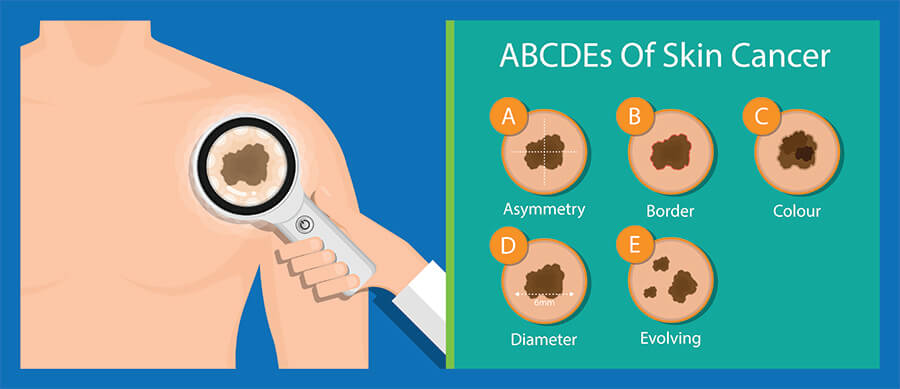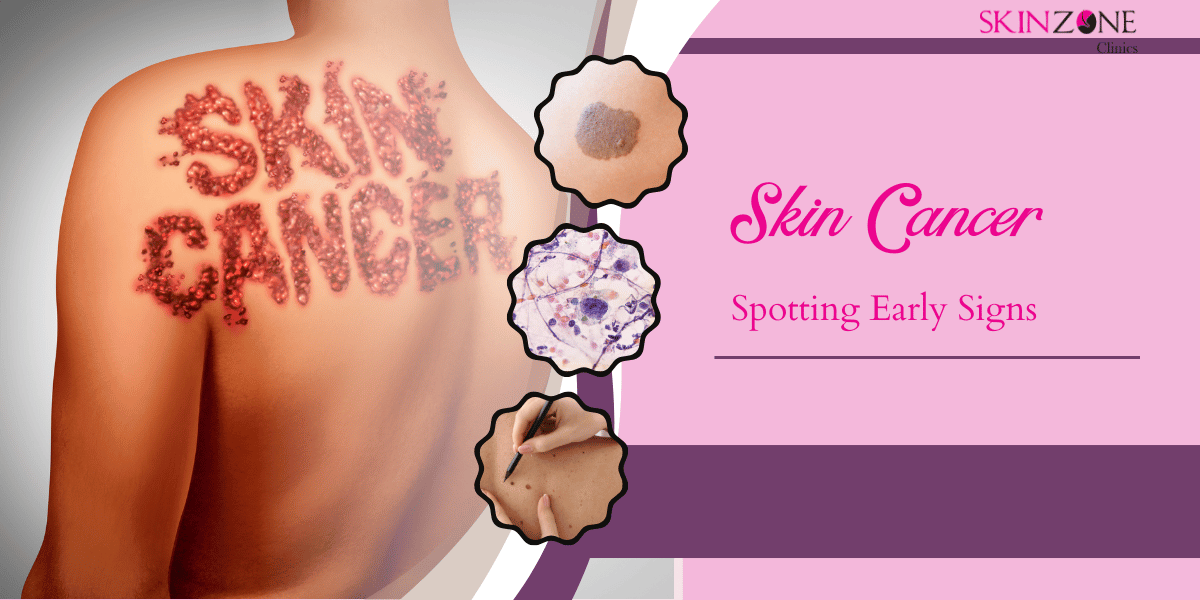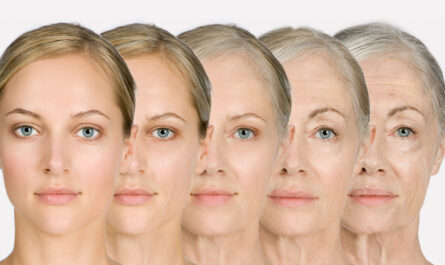Skin cancer is one of the most common types of cancer worldwide, but it is also one of the most preventable if detected early. Understanding the early signs of skin cancer can make all the difference in ensuring timely treatment and a successful recovery. With advancements in dermatology, including the use of cutting-edge technologies like laser treatments and skin cancer screenings, the ability to detect and treat this has significantly improved. In this blog, we will guide you through the basics of skin cancer, its symptoms, treatment options, and expert advice to help you stay proactive about your skin health.
Why Spotting Early Signs of Skin Cancer is Crucial
Early detection of skin cancer significantly increases the chances of successful treatment. According to the American Cancer Society, nearly 1 in 5 Americans will develop skin cancer in their lifetime. While cancer is highly treatable, its survival rate depends largely on how early it is caught. Recognizing the signs can prevent the cancer from advancing to a more serious stage, which is why this topic is essential for anyone looking to safeguard their skin and health.
In this guide, we will cover:
- The basics of skin cancer and its common types
- The causes, symptoms, and risk factors
- Available treatments and solutions
- Expert tips on maintaining skin health and monitoring changes
What is Skin Cancer?

Skin cancer is the abnormal growth of skin cells. It usually occurs when skin cells begin to grow uncontrollably, often due to DNA damage caused by ultraviolet (UV) radiation from the sun or tanning beds. There are three primary types of cancer:
- Basal Cell Carcinoma (BCC) – The most common form, typically occurring on sun-exposed areas like the face, ears, neck, and arms. BCC grows slowly and rarely spreads to other parts of the body.
- Squamous Cell Carcinoma (SCC) – This type can appear on areas of the skin that have been exposed to the sun but can also develop on scars or sores. SCC can be more aggressive than BCC but is treatable if detected early.
- Melanoma – The most dangerous form of skin cancer, melanoma begins in the melanocytes (cells that produce pigment). It can spread quickly to other organs if left untreated, making early detection crucial.
Causes, Symptoms, and Risk Factors

Causes:
The primary cause of cancer is exposure to UV radiation from the sun or artificial tanning devices. Over time, this radiation damages the skin’s DNA, leading to abnormal cell growth. Other factors that increase your risk include:
- Fair skin: People with lighter skin are more prone to skin damage from UV radiation.
- Family history: If this cancer runs in your family, you are at a higher risk.
- Age: This cancer is more common in older adults, but it can affect younger individuals as well.
- Weak immune system: People with compromised immune systems, such as those undergoing organ transplants, are more susceptible.
Symptoms:
Early signs of skin cancer can often be subtle. Here are some common signs to watch for:
- New growths or moles: A new growth on your skin or a change in an existing mole’s appearance could be a warning sign.
- Changes in color: If a mole or spot becomes darker or changes color, this could indicate skin cancer.
- Asymmetry: Moles that are asymmetrical, with irregular shapes, can be a sign of melanoma.
- Border irregularity: Moles or spots with jagged or uneven edges are more concerning.
- Size: Skin cancers are often larger than a pencil eraser, but melanoma can be smaller in some cases.
- Bleeding or crusting: If a mole or skin growth starts to bleed, scab, or develop a crust, it is important to have it checked immediately.
Early Detection Strategies for Skin Cancer
Early detection of skin cancer is crucial for effective treatment and improved outcomes. By recognizing the warning signs and performing regular skin checks, individuals can spot potential skin cancers before they spread. Here are some key strategies for early detection:

- Perform Regular Self-Exams: Conduct a full-body skin check every month. Pay close attention to any changes in existing moles or new growths. Look for signs like asymmetry, irregular borders, multiple colors, or moles larger than the size of a pencil eraser.
- Follow the ABCDE Rule: The ABCDE rule is a helpful guide for identifying melanoma:
- A for Asymmetry
- B for Border irregularity
- C for Color variation
- D for Diameter greater than 6mm
- E for Evolving or changing shape, size, or color
- A for Asymmetry
- Visit a Dermatologist Regularly: For those at higher risk or with a history of skin cancer, annual visits to a dermatologist are recommended. A professional can identify subtle changes that may go unnoticed during self-exams.
- Use Sun Protection: Preventing skin damage through sunscreen, protective clothing, and avoiding tanning beds reduces the risk of developing skin cancer.
Treatment Options for Skin Cancer
Fortunately, skin cancer is highly treatable when detected early. The treatment approach depends on the type, size, and location of the cancer. Here are the most common treatment options:
- Surgical Excision: The most common treatment for skin cancer, surgical excision involves removing the cancerous growth and a small margin of surrounding healthy tissue to ensure that no cancer cells remain.
- Mohs Surgery: This is a precise surgical technique used for BCC and SCC, where thin layers of cancerous tissue are removed and examined until all cancer cells are gone.
- Radiation Therapy: If surgery is not an option, radiation therapy can be used to kill cancer cells, especially for tumors in areas difficult to reach.
- Topical Treatments: Creams or ointments like imiquimod or 5-fluorouracil can be used for superficial skin cancers or precancerous growths.
- Chemotherapy: Used in advanced cases or when cancer has spread beyond the skin, chemotherapy can help kill cancer cells.
- Immunotherapy: For advanced melanoma, immunotherapy helps to stimulate the body’s immune system to target and destroy cancer cells.
How to Conduct a Self-Examination of the Skin
A self-examination of the skin is an important step in detecting skin cancer early. By performing a full-body skin check regularly, you can spot changes in moles or new growths that may require attention. Here’s how to conduct a thorough skin exam:
- Choose the Right Environment: Find a well-lit area, ideally with natural light, and use a full-length mirror. Have a hand mirror available for checking hard-to-see areas.
- Check Your Face and Neck: Start with your face, ears, and neck. Examine your eyelids, under your chin, and your scalp using a comb or hairdryer to part your hair.
- Inspect Your Torso and Back: Stand in front of the mirror and check your chest, stomach, and back. Use a hand mirror to check your back, shoulders, and the back of your neck.
- Examine Your Arms and Hands: Look at the tops and undersides of your arms, palms, and between your fingers. Don’t forget your nails.
- Examine Your Legs and Feet: Check the front, back, and sides of your legs, including the soles of your feet, between your toes, and the toenails.
- Look for Changes: Be on the lookout for any new growths, moles that change in size, shape, or color, and any sores that won’t heal.
Expert Tips for Skin Health and Monitoring
Maintaining good skin health and monitoring changes regularly are essential for preventing skin cancer. Here are some expert recommendations:

- Use sunscreen: Apply a broad-spectrum sunscreen with SPF 30 or higher every day, even on cloudy days or when you’re indoors.
- Avoid tanning beds: Tanning beds significantly increase the risk of skin cancer, especially melanoma.
- Wear protective clothing: Protective hats, sunglasses, and clothing can help minimize UV exposure.
- Perform regular skin checks: Perform a self-exam monthly to look for any new growths or changes in existing moles.
- Visit a dermatologist: Regular check-ups with a dermatologist can help identify potential skin cancer early, especially if you’re at higher risk.
Skinzone Clinics: Your Trusted Dermatology Partner
At Skinzone Clinics in Borivali, Mumbai, we offer expert dermatology services to help you maintain healthy, beautiful skin. Our team of skilled professionals is committed to providing personalized care using advanced treatments and techniques. We specialize in a wide range of services, including:
- Medspa services like HIFU, Microdermabrasion, and Anti-Aging treatments
- Botox & Fillers for facial rejuvenation like Derma Fillers
- Skin & Hair treatments such as acne, pigmentation, hair loss, and chemical peels
- Laser treatments for skin pigmentation, hair removal, and more
- IV Lounge services for vitamin boosts like Glutathione and Vitamin C
Our goal is to provide lasting, effective solutions to all your dermatological needs, ensuring your skin’s long-term health and beauty. Book a consultation with us today at:
- Mumbai: Office No. 403, Vini Elegance, Above Tanishq Jewellers, L.T. Road, Borivali West, Mumbai – 400092. +91 8657536730 | skinzoneclinics@gmail.com
- Pune: Office No. 588, B3, 1st Floor Ganesh Market, Bibwewadi Kondhwa Rd, next to Spire Hospital, Pune – 411037. +91 9766540054 | skinzoneclinics@gmail.com
FAQs
- What is the most common type of skin cancer?
- Basal cell carcinoma (BCC) is the most common form of skin cancer.
- Basal cell carcinoma (BCC) is the most common form of skin cancer.
- How do I know if a mole is cancerous?
- Look for asymmetry, irregular borders, multiple colors, or changes in size. Seek a dermatologist if you notice any changes.
- Look for asymmetry, irregular borders, multiple colors, or changes in size. Seek a dermatologist if you notice any changes.
- Can skin cancer be cured?
- Skin cancer is highly treatable when detected early. Surgical excision and other treatments can cure most cases.
- Skin cancer is highly treatable when detected early. Surgical excision and other treatments can cure most cases.
- How often should I get a skin check?
- If you have a history of skin cancer or are at higher risk, consider getting checked annually by a dermatologist.
- If you have a history of skin cancer or are at higher risk, consider getting checked annually by a dermatologist.
- Can sun exposure lead to skin cancer?
- Yes, prolonged sun exposure, especially without protection, increases the risk of developing skin cancer.
- Yes, prolonged sun exposure, especially without protection, increases the risk of developing skin cancer.
Conclusion
Spotting the early signs of skin cancer is crucial for successful treatment. By keeping an eye on your skin for changes, practicing sun safety, and seeking professional care when needed, you can significantly reduce the risk of developing skin cancer. Remember, early detection is the key to successful treatment, so don’t hesitate to consult a dermatologist if you notice any unusual changes in your skin. Stay proactive, stay safe, and take care of your skin!




